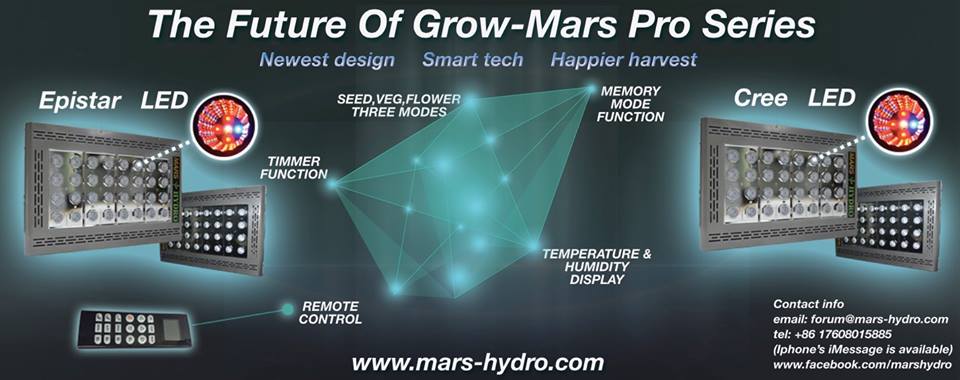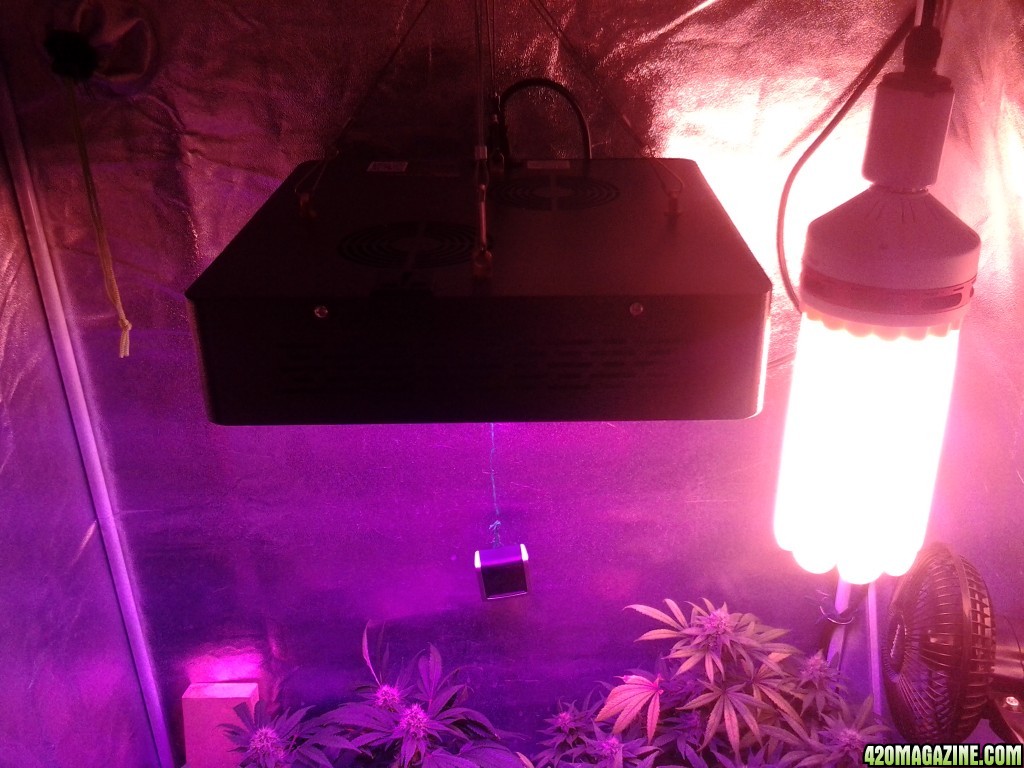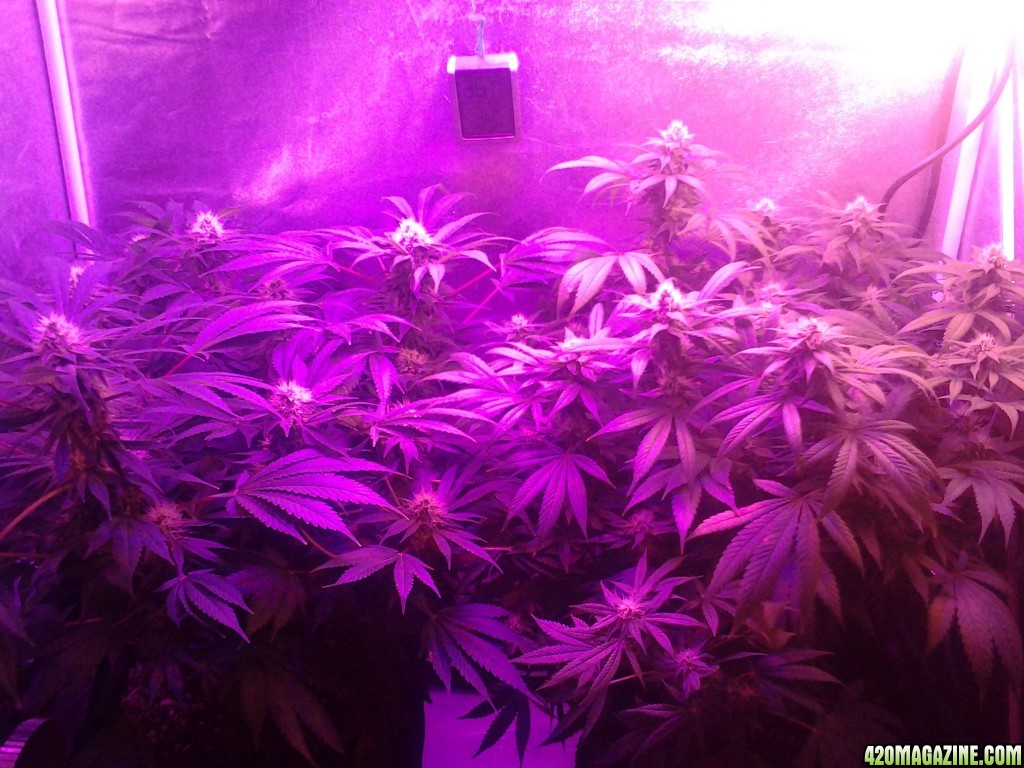tyvm icemud and ruddie for theses great infos ...
nice to know icemud .... but i cannot agree with that. if this is true, green led lights will disturb plants durring flowering at night and im completly sure it is not, cause i do it almost every 3-4 days every grow and i never disturbed my plants.
i really do beleive what ruddie and specially ed rosenthal is saying, make more sense for me.
led panels use blues-reds chips with some white for the same reason .... green is useless.
you are very kind for trying to improve my knowledge, but i really think this is wrong. green used at 79% i really cannot beleive that. make no sense with the experience i have.
the reading was very interesting at least.
Well I gave you the path to water, its your choice to drink it...
I supplied credible research which is accepted by the science community but its your choice whether you want to believe scientists in labs with controlled studies or not. Regardless if you want to accept knowledge or dismiss it is your choice, but the study I posted is the truth. Green is NOT useless.
I'm sure you have heard the word "PAR" which stands for photosynthetically active radiation. If green did not drive photosynthesis, then the PAR range of color (from UV to IR and everything in between) would not include green. The fact that it does proves that green drives photosynthesis. I would highly suggest googling the title of that last study I posted and read all 15 pages of it. (that is if you care to increase you knowledge or not). If you take it a step further and look at the McCree Curve, which shows that yes, plants absorb green.
The Ed Rosenthal information is not exactly correct, he says blue light does not effect flowering and that is not exactly correct. Both blue and red light are responsible for initiating flowering.
A cryptochrome is a non photosynthetic protein that is signaled by UV, blue and green light.
The Cryptochrome Blue Light Receptors
Xuhong Yu, Hongtao Liu, John Klejnot, and Chentao Lina,1
Cryptochromes are photolyase-like blue light receptors originally discovered in Arabidopsis but later found in other plants, microbes, and animals. Arabidopsis has two cryptochromes, CRY1 and CRY2, which mediate primarily blue light inhibition of hypocotyl elongation and photoperiodic control of floral initiation, respectively. In addition, cryptochromes also regulate over a dozen other light responses, including circadian rhythms, tropic growth, stomata opening, guard cell development, root development, bacterial and viral pathogen responses, abiotic stress responses, cell cycles, programmed cell death, apical dominance, fruit and ovule development, seed dormancy, and magnetoreception. Cryptochromes have two domains, the N-terminal PHR (Photolyase-Homologous Region) domain that bind the chromophore FAD (flavin adenine dinucleotide), and the CCE (CRY C-terminal Extension) domain that appears intrinsically unstructured but critical to the function and regulation of cryptochromes. Most cryptochromes accumulate in the nucleus, and they undergo blue light-dependent phosphorylation or ubiquitination. It is hypothesized that photons excite electrons of the flavin molecule, resulting in redox reaction or circular electron shuttle and conformational changes of the photoreceptors. The photoexcited cryptochrome are phosphorylated to adopt an open conformation, which interacts with signaling partner proteins to alter gene expression at both transcriptional and posttranslational levels and consequently the metabolic and developmental programs of plants.
Where Ed Rosenthol goes and says that "They are almost totally insensitive to green light and for this reason reflect it back to us while absorbing most other spectrums." which is wrong. If you read all 15 pages of the 1st post I made, (google the name of the abstract) you will see that like I originally said, green drives photosyntheis. In low light irradiance it is not as good as blue and red, but in intense light (high irradiance) then green light is more efficient.
Although the light absorption profiles calculated by Nishio (2000) are spurious ( Vogelmann and Evans 2002 ), his
argument has nevertheless been proven experimentally to be correct using our differential quantum yield method.
Namely, red light is more effective than green light in white light at low PPFDs, but as PPFD increases, light energy
absorbed by the uppermost chloroplasts tends to be dissipated as heat, while penetrating green light increases photo-
synthesis by exciting chloroplasts located deep in the mesophyll. Thus, for leaves, it could be adaptive to use chlo-
rophylls as photosynthetic pigments, because, by having chlorophyll with a ‘green window’ the leaves are able to
maintain high quantum yields for the whole leaf in both weak and strong light conditions.
Here are a few more studies show in fact, yes, Green light will effect plants, sometimes in positive ways, sometimes in negative. Dependant on the total spectral blend.
Plant Productivity in Response to LED Lighting
Gioia D. Massa1
Department of Horticulture and Landscape Architecture, Purdue University, 625 Agriculture Mall Drive, West Lafayette, IN 47907-2010
Hyeon-Hye Kim and Raymond M. Wheeler
Space Life Sciences Laboratory, Kennedy Space Center, FL 32899
Cary A. Mitchell
GREEN LIGHT
Many previous studies indicate that even with blue light added to red LEDs, plant growth is still better under white light. Certainly to humans, plants grown under red plus blue light appear purplish gray, and disease and disorder become difficult to diagnose (Fig. 1). One possible solution is using a small amount of green light. To test this hypothesis, Kim et al. (2004a) grew lettuce plants under red and blue LEDs with and without 5% (6 μmol·m−2·s−1) green from LEDs with both treatments at the same total PPF (136 μmol·m−2·s−1). They observed no impact on lettuce growth with all measurable characteristics such as photosynthesis rate, shoot weight, leaf area, and leaf number being the same with and without green. They followed this work with another lettuce study to determine the effects of higher levels of green light under a total PPF of 150 μmol·m−2·s−1 and an 18-h photoperiod (Kim et al., 2004b). They used red and blue LEDs with and without green fluorescence (GF) (24% green for RGB or 0% green for RB), GF alone (86% green), and CWF (51% green) and demonstrated that lettuce plants grown with RGB had higher fresh and dry weights and greater leaf area than those grown with CWF or RB alone. Plants grown under GF had the least biomass of all treatments. Further work with the same system (Kim et al., 2004c) examined g S. Although lettuce grown under CWF showed greater maximal g S than under RB, RGB, or GF, dry mass accumulation was highest in the RGB treatment, indicating that g S did not limit carbon assimilation under the growth conditions provided. Additionally, the authors demonstrated that g S could be changed reversibly in response to narrow waveband light, even for plants grown under CWF (Kim et al., 2004c). Kim et al. (2006) summarized the experiments with green supplementation of red and blue LED light and concluded that light sources consisting of more than 50% green cause reductions in plant growth, whereas combinations including up to 24% green enhance growth for some species.
Figure 1.3 Light absorption by pigments in solution and by leaves. Absorbance (A) refers to attenuation of light transmitted through a leaf or a solution of leaf pigments, as measured in a spectrophotometer, and is derived from the expression A = log I0/I where I0 is incident light, and I is transmitted light. The solid curve (scale on right ordinate) shows absorbance of a solution of pigment—protein complexes equivalent to that of a leaf with 0.5 mmol Chl m-2. The dotted curve shows absorptance (scale on left ordinate), and represents the fraction of light entering the solution that is absorbed. Virtually all light between 400 and 500 nm and around 675 nm is absorbed, compared with only 40% of light around 550 nm (green). The dashed curve with squares represents leaf absorptance, which does not reach 1 because the leaf surface reflects part of the incident light. Of light around 550 nm, 75% is absorbed because leaves scatter light effectively which increases the pathlength and thereby increases probability of absorption above that observed for the same pigment concentration in solution. (Based on McCree 1972; Evans and Anderson 1987)
Scattering occurs by reflection and refraction of light at cell walls due to the different refractive indices of air and water. Irregular-shaped cells in spongy tissues enhance scattering, increasing the path length of light travelling through a leaf and thus increasing the probability of absorption. Path lengthening is particularly important for those wavelengths more weakly absorbed and results in at least 80% absorption, even at 550 nm (Figure 1.3). Consequently, leaves typically absorb about 85% of incident light between 400 and 700 nm; only about 10% is reflected and the remaining 5% is transmitted. These percentages do of course vary according to genotype x environment factors, and especially adaptation to aridity and light climate.
Recent evidence shows that green light also has discrete effects on plant biology, and the mechanisms that sense this light quality are now being elucidated. Green light has been shown to affect plant processes via cryptochrome-dependent and cryptochrome-independent means. Generally, the effects of green light oppose those directed by red and blue wavebands. This review examines the literature where green light has been implicated in physiological or developmental outcomes, many not easily attributable to known sensory systems. Here roles of green light in the regulation of vegetative development, photoperiodic flowering, stomatal opening, stem growth modulation, chloroplast gene expression and plant stature are discussed, drawing from data gathered over the last 50 years of plant photobiological research. Together these reports support a conclusion that green light sensory systems adjust development and growth in orchestration with red and blue sensors.
If you think Green "safelights" don't effect plants...think again...
In Arabidopsis, green light stimulates germination effectively through phyA and phyB (Shinomura et al., 1996). Green light establishes an active phy pool and even the most miniscule ‘safelight’ green light treatments activate robust plant responses (Mandoli and Briggs, 1981; Steinitz et al., 1985; Dhingra et al., 2006).
Dark-grown seedlings were given a pulse of blue light followed by a pulse of green. A characteristic phot response was observed, as seedlings exhibited a normal first-phase of growth inhibition as described (Folta and Spalding, 2001; Folta et al., 2003a). However, within minutes, and only after receiving a green light pulse, seedling growth would accelerate to 150% of the dark rate. The effect of green was unlike any previously described, as plants would elongate at a rate that exceeded their dark (and presumably most rapid) rate. This unusual green-induced increase in stem elongation rate was later examined in great detail. Single, etiolated seedlings were tested for the elongation response to a brief green light pulse. Within minutes of a dim-green-safelight-quality light pulse the dark-grown seedling would elongate faster than it would elongate in complete darkness
So to conclude... if ALL of these scientific research papers are showing plants respond to green light, how is green light useless?
Green light is not useless....
Yes, in some studies it shows counteractive effects vs red/blue light, but in other studies it shows increased photosynthesis, dry weight, effects on flowering time, elongation and growth traits......The information about green light is there, but it only does good if you stay open minded and accept scientific research, or decide to just rely on "regurgitated information".




 jk
jk morning pypcio, the recommend distance during flowering stage is 30.28cm~45.72cm.
morning pypcio, the recommend distance during flowering stage is 30.28cm~45.72cm. thanks for the help, flexy.
thanks for the help, flexy. pypcio, it's better add supplement light if the true grow area is full square.
pypcio, it's better add supplement light if the true grow area is full square. 
 thanks for the info, John. We are updating the wesbite. And the coverage will be updated, too.
thanks for the info, John. We are updating the wesbite. And the coverage will be updated, too.  thanks for the help Mike, MarsII 1600w and 1200w may be a little overpower. MarsII900w will be adequate.
thanks for the help Mike, MarsII 1600w and 1200w may be a little overpower. MarsII900w will be adequate. 


 yes, this is what puzzle me sometimes. The data is fixed, but growers always have different experience. Maybe the best way is to figure out your own method by practices.
yes, this is what puzzle me sometimes. The data is fixed, but growers always have different experience. Maybe the best way is to figure out your own method by practices.